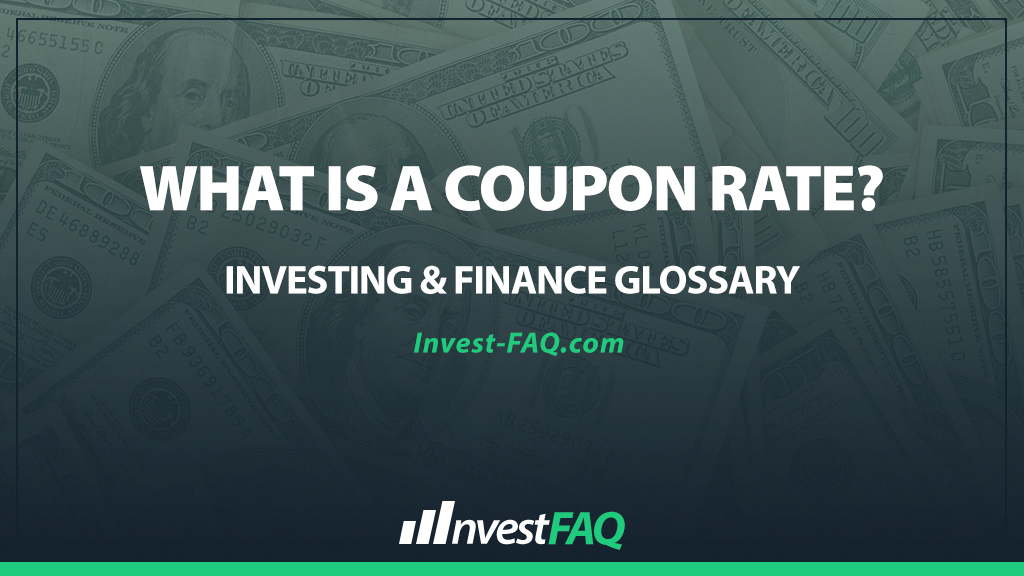
Coupon Rate
Contents
A coupon rate is the annual interest rate paid by a bond issuer to the bondholders, expressed as a percentage of the bond’s face value. It determines the periodic interest payments that bond investors will receive until the bond’s maturity.
The coupon rate is a critical component in the issuance and trading of bonds, affecting both the issuer’s cost of borrowing and the investor’s yield from the investment. For businesses, setting the appropriate coupon rate is crucial when issuing bonds to ensure they are attractive to investors while minimizing borrowing costs.
The rate is often influenced by various factors, including the issuer’s creditworthiness, prevailing market interest rates, and the bond’s duration.
Example of a Coupon Rate
Imagine “TechStart Inc.,” a growing technology firm, decides to issue bonds with a face value of $1,000 each to raise capital for new projects. TechStart sets a coupon rate of 4% on its bonds. Therefore, bondholders will receive annual interest payments of $40 ($1,000 x 4%) per bond until the bond matures.
In this scenario, TechStart Inc. uses the coupon rate to determine the interest expense it will incur for borrowing funds through bond issuance. The chosen rate of 4% reflects TechStart’s assessment of its ability to attract investors based on its financial health, the competitive market rates, and its capital needs.
From an investor’s perspective, the 4% coupon rate represents the return on investment they can expect to receive annually, making it an essential factor in their decision to purchase the bonds.
Types and Uses in Business Scenarios
Coupon rates are integral to various business scenarios, including:
Capital Raising: Companies issue bonds with specific coupon rates to finance expansion, research and development, or debt refinancing.
Investment Decisions: Investors assess coupon rates among other factors to determine the desirability of a bond investment.
Financial Strategy: Firms strategically set coupon rates to manage their cost of capital and leverage structure.
Market Analysis: Analysts monitor changes in average coupon rates to gauge market trends and interest rate movements.
Significance for Investing & Finance
From an accounting perspective, the coupon rate has several implications:
Interest Expense Calculation: For issuers, the coupon rate directly impacts the amount of interest expense recorded on the financial statements, affecting net income and tax liabilities.
Investment Income Recognition: For investors, the coupon payments received are recognized as investment income, contributing to their overall financial performance.
Valuation: The coupon rate is a key factor in bond valuation, influencing both the issuer’s and investor’s financial analysis and reporting.
In summary, the coupon rate is a pivotal financial term that influences the dynamics of bond issuance and investment.
It plays a significant role in a company’s capital structure decisions, investors’ portfolio yields, and the broader financial market’s assessment of debt securities. Understanding and strategically managing coupon rates can significantly impact a business’s financial health and investment attractiveness.
FAQ
How does the coupon rate of a bond affect its attractiveness to investors?
A bond’s coupon rate directly influences its appeal to investors; higher rates typically make bonds more attractive by offering better returns on investment, assuming similar risk levels compared to other available bonds.
Can a bond’s coupon rate change after it has been issued?
For a fixed-rate bond, the coupon rate remains unchanged throughout the life of the bond, providing a steady and predictable income stream to investors, while variable or floating-rate bonds may see their coupon rates adjust in response to changes in market interest rates.
What factors influence the initial setting of a bond’s coupon rate by the issuer?
The initial coupon rate of a bond is influenced by several factors, including the issuer’s creditworthiness, prevailing market interest rates, the bond’s term to maturity, and the overall economic environment, aiming to balance the cost of borrowing with the necessity to attract investors.
How does the coupon rate relate to a bond’s yield to maturity?
While the coupon rate determines the periodic interest payments on a bond, the yield to maturity reflects the total return an investor will receive by holding the bond until it matures, incorporating both the coupon payments and any differences between the bond’s purchase price and face value.
